Back in February, I posted about my Remington 700 Precision Rifle Project. To recap for those who don’t want to go back and read that post, I bought a used Remington 700 SPS in .300 Winchester Magnum and added an Accuracy International Stock. At that point, I was about $1,300 into the project. Since then, I swapped out the stock Remington trigger for a Timney, replaced my cheap bipod with an Atlas BT-10NC, added a Bushnell Elite ERS 6-24 Scope and sent my rifle out to ScoreHi Gunsmithing in Albuquerque, NM for some additional fine tuning . . .
Charley Robinson runs ScoreHi and from the reviews I’d read about his work, I was interested to see what kind of magic he could work with this gun. I had him replace the stock barrel with one from Brux, blueprint the Remington Action, replace the bolt knob with a Badger, thread the muzzle, fit one of ScoreHi’s muzzle brakes, epoxy bed the stock, and Cerakote the action and barrel. Total cost of Charlie’s work: $1,500.
Adding in the cost of the Timney trigger ($125), the Atlas bipod (ohm and an AI Spigot adapter so that I could mount it directly to the Accuracy International’s quick release bipod socket) ($290), not to mention the Bushnell Scope ($825 after $75 Midway coupon and $75 manufacturer rebate) and a Nightforce Scope mount ($200), I had a fully kitted out rifle, all for the low, low price of $4,240. It’s worth pointing out for comparison purposes that most rifles don’t include the bipod, so really, we are looking at a precision rifle excluding glass and bipod for $3,000.
But the real question is, “How well does this thing really shoot?” Well, today I finally had the chance to really stretch its legs. I took a half day private lesson with Scott Kennison, the head instructor at the SIG Sauer Academy and an accomplished sniper instructor. We started by getting the scope zeroed at 100 yards. Then we moved out to the 300 yard line where we got some inconsistent results.
Since I was shooting hand-loaded ammo packing a 220 grain Sierra Match HPBT, Scott asked how confident I was on the consistency of the ammo. I wasn’t overly confident as this was ammo I’d loaded in bulk for a Precision Scoped Rifle class that I had taken a month or so before, so Scott broke out some Black Hills ammunition that featured a 190 grain HPBT bullet.
That’s when things immediately went from merely okay to pretty awesome. The photo below shows a three shot group from 300 yards out. The bullet splash tends to obscure things a bit, but when examined close up, I had managed to land three rounds within one inch of each other. This translates into a 1/3 MOA grouping at 300 yards.
Now, I’m a long way from joining any special forces sniper teams, so the fact that this rifle is capable of that sort of accuracy in my hands speaks volumes for the results that Charley and his staff are capable of working on your average rifle. While, I’m not qualified to judge how close my gun may be (accuracy-wise) to established names such as McMillan and Accuracy International, Scott Kennison is and he thought this gun could definitely ride with those guys.
While I have yet to really let this rifle test its long range legs with the 190 grain bullet, in the aforementioned Precision Scoped Rifle class, I did get the opportunity to shoot at 800 yards and was able to consistently hit the chest plate using my 220 grain hand loads. I have no doubt that once I work up some consistent loads using the 190 grain bullet, this gun should be capable of great things.
This project has taught me a couple of things. First, no matter which way you choose to go, you are going to have to pay for real accuracy. As Foghorn discovered in his quest for the $500 1,000 yard rifle, sometimes, there’s just no way to make super cheap perform super well.
Whether you choose to build your own from the ground up or buy a pre-built rifle, there’s no escaping the fact that consistent accuracy won’t come cheap. From what I have seen, it appears that if you choose a competent gunsmith to build your rifle, you can get something that rivals the big names in performance for a good deal less money. ScoreHi Gunsmithing sells their own custom rifles, one called “The Dauntless,” which can be had for $3,100 looks pretty damn close to what I built.
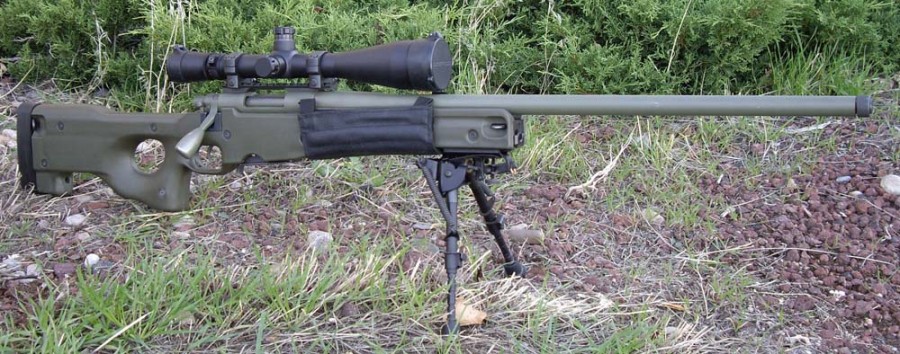 In fact, when you consider what ScoreHi includes with their rifle (two magazines, scope rings, etc.), I think that going directly to ScoreHi would have been the less expensive way to go from the start. Live and learn. On the other hand, my approach let me add parts to the rifle over a protracted period (about 8 months start to finish), so I didn’t have to bite the bullet on a big credit card bill all at once (which kept me under the wife’s radar).
In fact, when you consider what ScoreHi includes with their rifle (two magazines, scope rings, etc.), I think that going directly to ScoreHi would have been the less expensive way to go from the start. Live and learn. On the other hand, my approach let me add parts to the rifle over a protracted period (about 8 months start to finish), so I didn’t have to bite the bullet on a big credit card bill all at once (which kept me under the wife’s radar).
The second thing I learned is what a difference the right ammo makes. I had initially chosen the 220 grain Sierra Matchking HPBT because I read that’s what the Navy had selected for use in its .300 Win Mag rifles. Since I know exactly squat about ballistics, but assume that folks in the Navy Special Warfare group do, I decided to start there. As Scott Kennison explained it, though, you could have two identical rifles roll off the assembly line one after the other and each one could have its own particular preference for ammo. With this in mind, I’ll be spending some time playing with powder charges and bullet weights in my quest for the “perfect” match for this gun.
The .300 Win Mag is a fun gun to shoot. The combination of the Accuracy International stock and the muzzle break bring recoil down to the “almost pleasant” range. I can shoot this rifle all day and not be in pain the next. Reloading almost completely negates the cost advantage the .308 has over the .300 Win Mag, and the Win Mag has better ballistics to the .308 across all ranges. I’ll fry my barrel faster on the .300 Win Mag than I would on a .308, but we’re still talking tens of thousands of rounds, which will take me a while to shoot.
The only real downside of this rifle is the weight. While I’ve been too lazy to find a scale, I’m guessing this beast probably clocks in somewhere north of 20 lbs. fully kitted out. That’s great if you have something to rest it on, not so great if you’re trying to hunt with it offhand. Then again, I didn’t buy this to be a hunting rifle – I have my Savage .338 Lapua for that (more on that in a future post). That aside, I’m pretty pleased with how things turned out. I’d also encourage anyone who is looking at high end rifles to consider this approach as well — if someone like myself who was relatively new to precision shooting can end up with a rifle as accurate as this one, you can too.

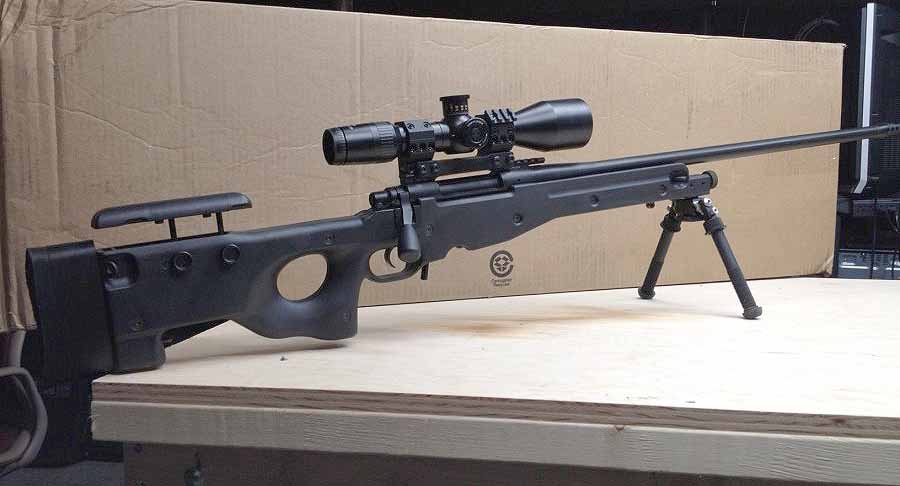
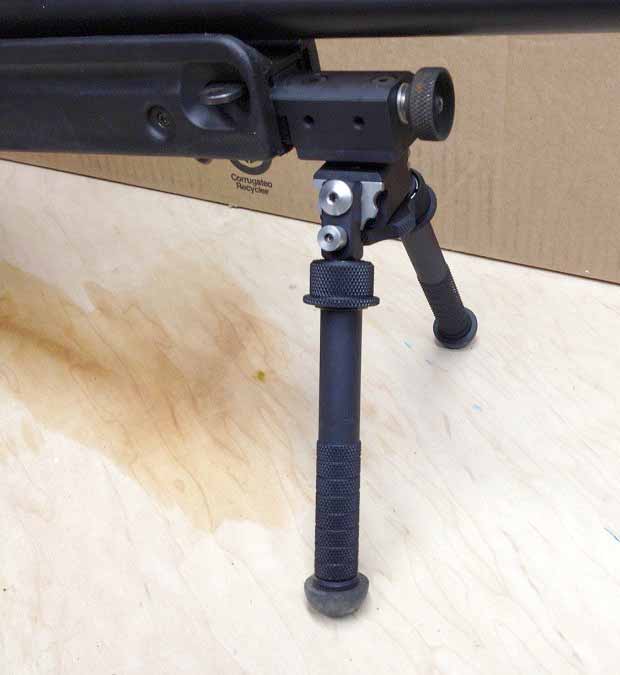
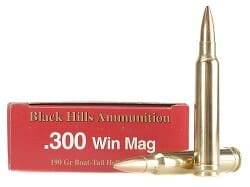

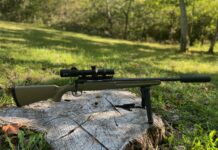


Interesting article, and nice rifle. I’m glad you got what you paid for. I’m very curious to hear about the Savage .338. I’ve been considering a Savage 110ba, but at half the price the “other” Savage .338 look to be a steal for a .338 Lapua. I’ve just been waiting for a good review.
A review of my Savage 111 Long Range Hunter in .338 is in the works. Two quick things – Recoil is not bad at all – I shot 40 rounds in a couple of hours with only minor soreness. Secondly, at 800 yards, I nailed a three round 4 inch group (1/2 MOA). More to follow soon.
I understand the tinkerer’s desire to personalize a gun, but for all the money you have into that Remmy, you could have bought a rifle that didn’t suck from the git-go. I mean, it sounds like the only thing “factory” on your gun is the action. And you still are stuck with a crappy 90 degree bolt throw. I don’t get it. Why not just buy a Sako TRG, AI AW, Steyr SSg-04, or a Blaser Tac 2. Those guns will retain their resale value much better than a do-it-yourself project gun.
My mostlt stock 700 LTR is a little under MOA, and its probably going to stay that way.
Those other guns you mentioned all cost anywhere from $1,000 – $4000 more than I paid for my gun and would not have shot much of any better. Also, I really couldn’t give a fig about resale value on this gun.
I’m not so sure… The Steyr SSG-04 is $2300, the TRG-22 is about 3,000, the Blaser is under $4,000. Not sure what the Accuracy Internationals arre going for nowadays.
True enough, but didn’t you say in your review that the Steyr barrels are not replaceable in the U.S.? Granted that it will take me a while to shoot mine out, but I’d still like the option of being able to re barrel it here. As for the Blaser – Hey, I’m a Sig guy and want to like them, but I was talking with a guy who shoots for the U.S. National Palma team and he was telling me to stay away from the Blasers. The guys that shoot long range, super accurate stuff don’t like them that much.
Finally, as I said in my post, this project started more than 8 months ago. At no time did I have to bite the bullet at once with an over $3K purchase. Instead, I had the opportunity to tinker, to learn what each modification did, and to have fun in the process.
Not something you can do with a store bought rifle.
I don’t know about the Blaser barrels, but I have long been a fan of their straight pull action and their awesome walnut stocks. Why don’t we see more of that bolt type?
Why epoxy bed a chassis stock? That’s pointless.
You’d think so, but even the AICS is not a perfect mate to the action. Snce the gun was getting work anyway, the additional cost to bed the stock was close to inconsequential and it does make a difference.
.338 Lapua for hunting? Are you hunting moose? Seems like that much bullet would be overkill on anything smaller.
Well, I don’t really hunt. But I needed something to justify another rifle. Someone once asked me – “What the hell do you hunt with a .338 Lapua?” My response was “Pretty much whatever the hell I want”
You can purchase a complete rifle from Accuracy International for $3600.00, add a 16x Super Sniper Scope for $299.00 and an Atlas bipod w/adaptor from Midway USA for $290.00, for a total outlay of $4189.00 plus shipping. It all comes together in one week.
While you can purchase a complete .308 rifle from AI for $3,600, as I said in my review, I wanted a .300 Win Mag. You want one in that caliber from AI and you need to step up to the AW series and that runs $7,690. A tad more than I paid.
Also, since I shoot from 100 yards to really far out, I want a variable power scope. I have not found a good one yet that is super cheap. Compared to Nightforces and Leoupolds, my $900 Bushnell was a pretty good bargain I thought.
But tinkering and fiddling is fun, too.
When I saw .300WM, I immediately wondered about recoil… But 20lbs of mass will definitely smooth that out to manageable levels. I would not enjoy shooting .300WM in a 9lb gun on a regular basis, that’s for sure.
Great Post, very educational. I recently picked up a Remington 700 .300 win mag Custom Shop piece put together in a collaborative effort with Remington and the Army Marksmanship Unit. The rifle has the heavy milspec barrel, Maj. John Plaster composite dragunov stock with floating barrel, recoil bushing, fixed cheek rest, recoil pad. The rifle is heavy, and while I really like the gun, I think it is more than I want to hunt with. I have put a 6x24x50 Bushnell scope, Leupold base and rings, and a bipod on the gun, sighted in at 200 yards.
This rifle was going to be my big game, long range gun, however weighing in over 20 lbs, packing it around the Rocky’s does not appeal to me. My issue, is I don’t know what the gun is really worth (I bough it without the scope, rings/base, and bipod for $800). I have had a sniper buddy of mine tell me $1200-1500 pre-scope, etc.
My questions are: What is the gun worth? Where is the market for this gun if I want to sell it and get a reasonable price?
I am looking for a long range big game (elk, bear, moose) gun that I can pack around the mountains (10-15lbs ok), that is of high quality. I appreciate any thoughts or suggestions.
Hello, this weekend is pleasant in support of me, as this time i am reading this
great informative article here at my house.
if you want bang for the buck, buy a Rem700 SS5R. they come in 300WM, .308, and 243. After 100 rd barrel break in, I am shooting .165 MOA groups. Rifle costs $1200. feel free to google “Remington SS 5R milspec”
Comments are closed.